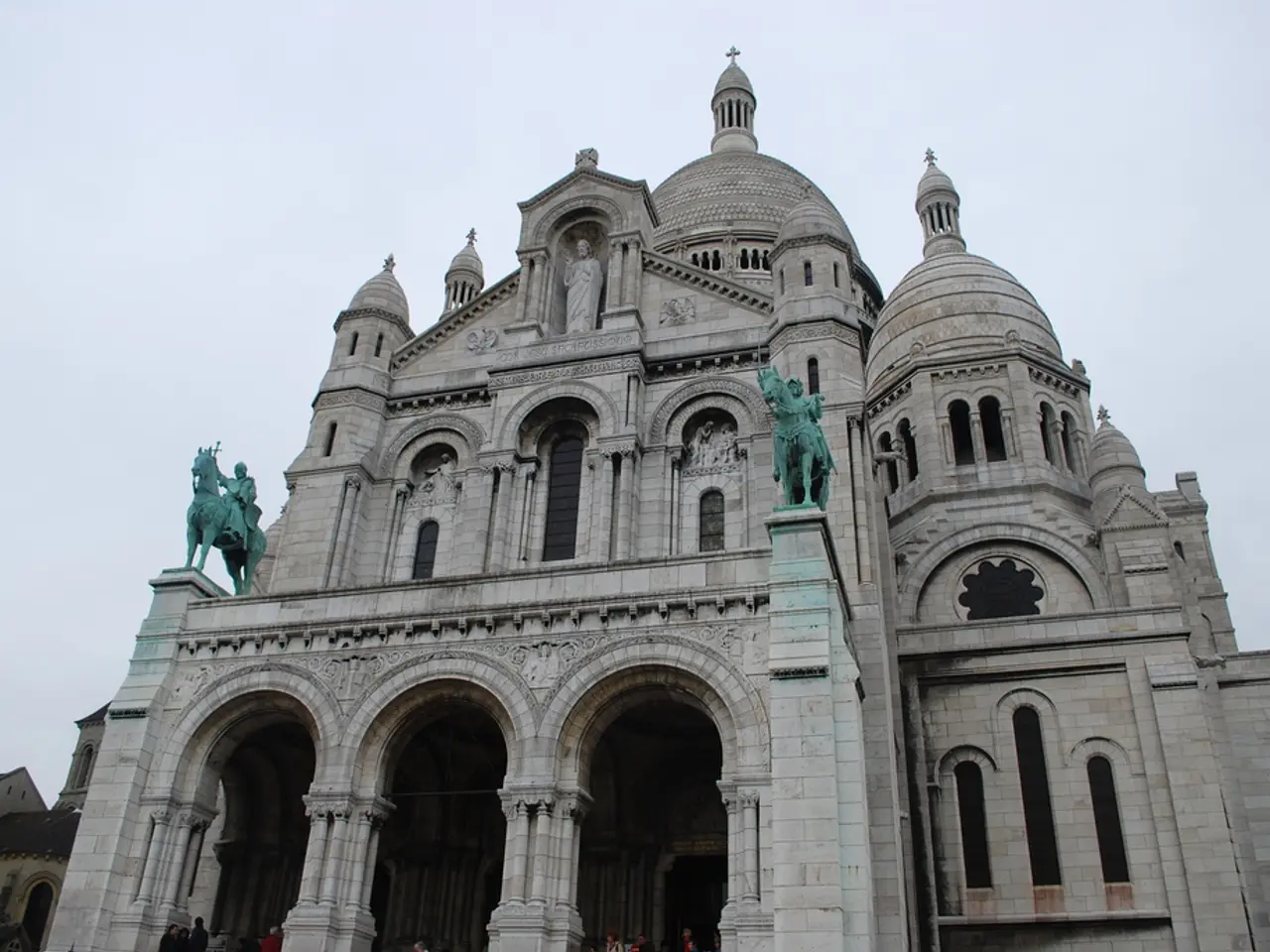Renovation of Gertraudenfriedhof's Main Building to a Grand Scale
The Gertrauden Cemetery in Halle (Saale) is a historically significant burial ground that reflects the cultural and architectural heritage of the region. A historically accurate renovation project for this cemetery, particularly focusing on features such as the monk-nun tile roof and the neoclassical crematorium, involves a careful balance of preservation, restoration, and interpretation of the site's original elements.
Key Aspects of the Renovation
- Monk-Nun Tile Roof
The "monk and nun" tile roof, a traditional type of clay roof tile with alternating convex (monk) and concave (nun) shapes, has been meticulously restored. This roofing style provides both aesthetic appeal and functional durability, characteristic of many historic structures in Germany. The renovation of this element involved sourcing historically accurate hand-molded tiles or reproductions that match the original in color, size, and shape. Proper installation techniques were crucial to maintain the authenticity and weather protection the roof offered.
- Neoclassical Crematorium
The crematorium at Gertrauden Cemetery is an example of neoclassical architecture, which was prominent in funerary buildings in the 19th and early 20th centuries. Features often include symmetrical design, classical columns or pilasters, pediments, and restrained decoration inspired by ancient Greek and Roman architecture. Renovation efforts concentrated on stabilizing and restoring structural elements, recreating original ornamental details, and updating infrastructure while respecting historic materials and construction techniques. Preserving original elements such as stonework, plaster, and metal fixtures was a priority, alongside ensuring the building can accommodate modern use without compromising its historic fabric.
Further Details and Significance
- Historical Context: Gertrauden Cemetery serves as both a historical resting place and a reflection of funerary customs in Halle (Saale), representing shifts in cultural attitudes toward death, remembrance, and architecture over centuries.
- Cultural Importance: The cemetery and crematorium embody the artistic and architectural trends of their respective eras, offering insights into neoclassical design principles and traditional building methods such as the monk-nun roofing technique.
- Conservation Philosophy: Renovations emphasize "like-for-like" repairs, meaning that new work matches the original materials and craftsmanship as closely as possible, to maintain historical integrity.
- Community and Education: The renovation enhances the site's role as a cultural landmark, potentially supporting guided tours, heritage education, and public appreciation of local history.
- Sustainability: Using traditional materials and methods often supports sustainability goals by extending the building's life and reducing the need for frequent repairs.
Summary
The historically accurate renovation of Gertrauden Cemetery, including its monk-nun tiled roof and neoclassical crematorium, is significant for preserving architectural heritage, promoting cultural memory, and maintaining the structural and aesthetic integrity of important historic funerary monuments. This work helps to connect contemporary society with its past in Halle (Saale) and serves as a model for careful heritage conservation.
Education can be enriched by visiting Gertrauden Cemetery in Halle (Saale) as it offers insights into neoclassical design principles and traditional building methods such as the monk-nun roofing technique. Lifestyle can also be influenced through awareness and appreciation of home-and-garden elements like the monk-nun tile roof, which embodies cultural heritage and provides functional durability.




